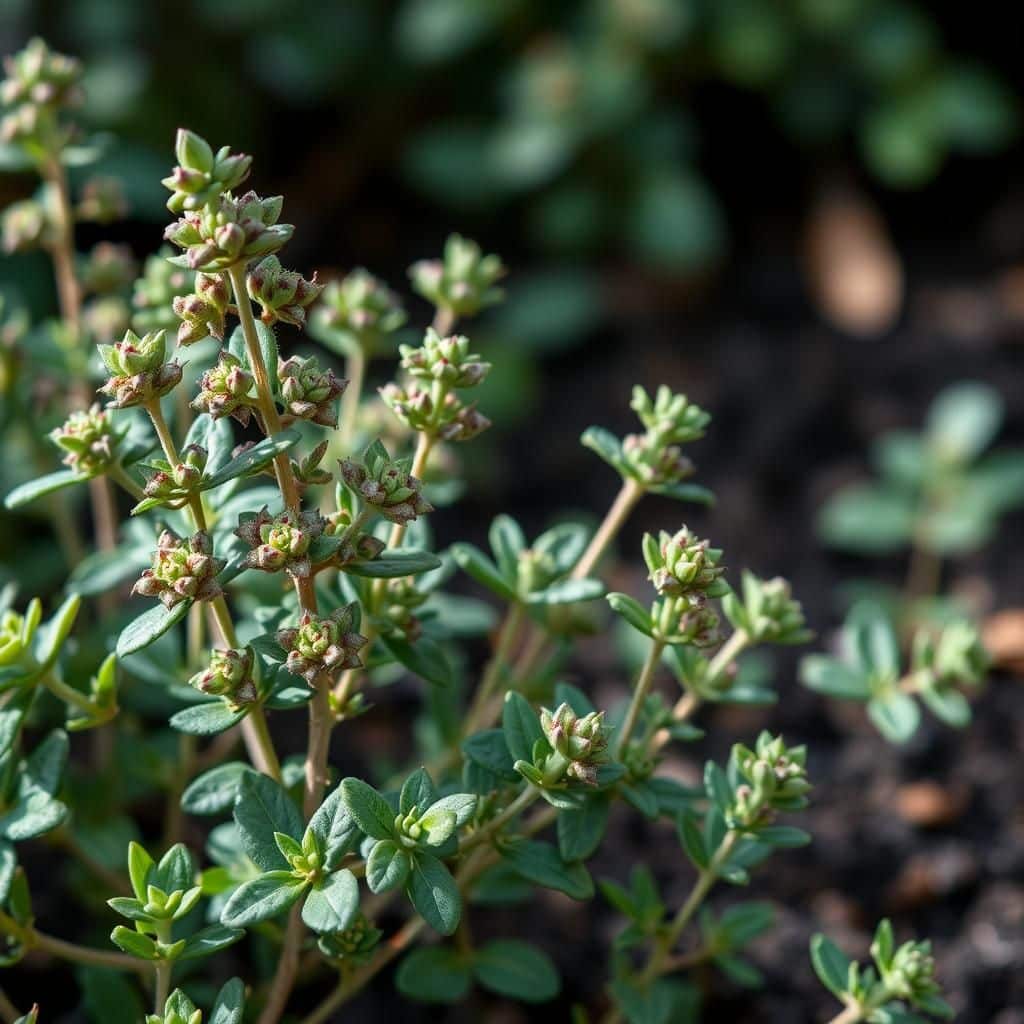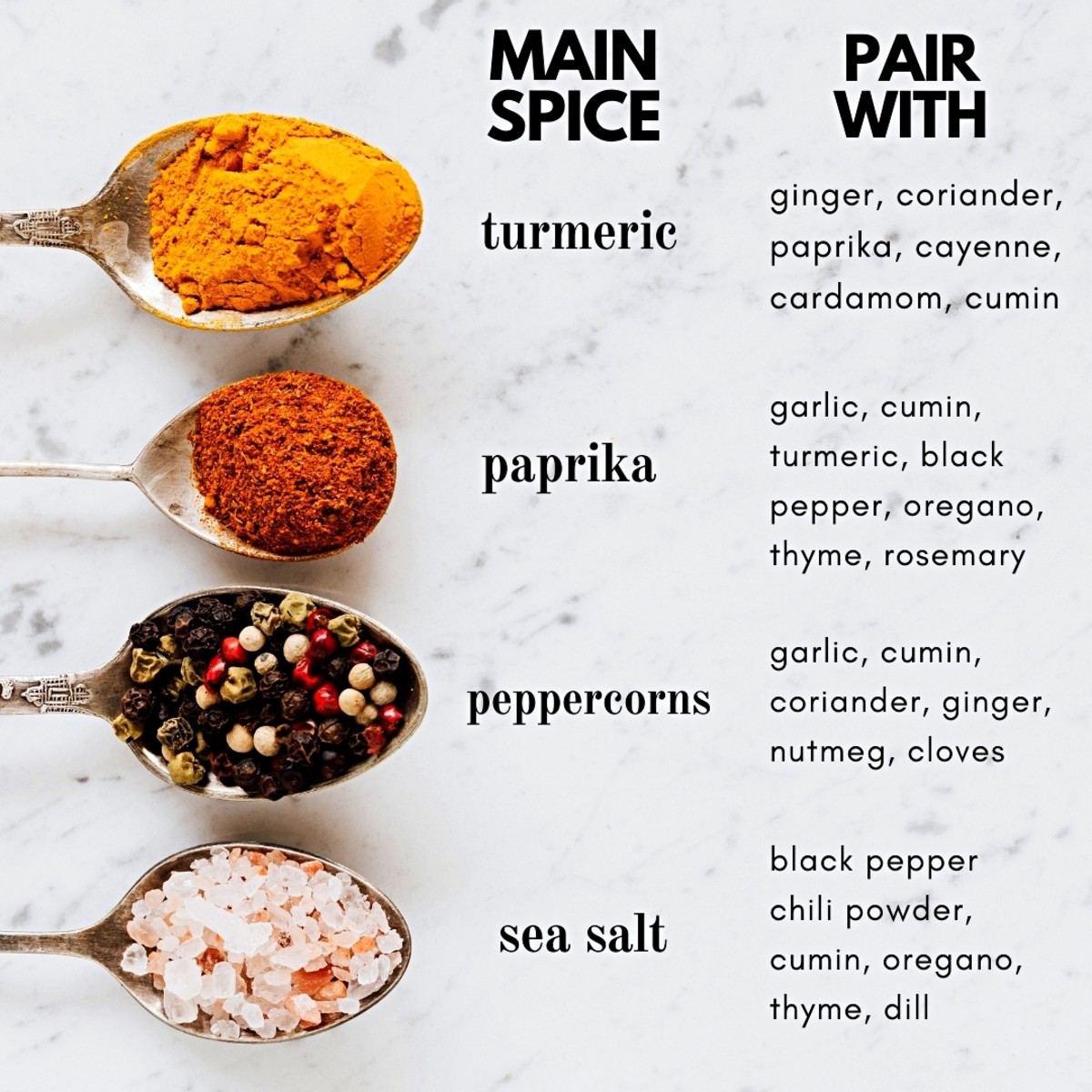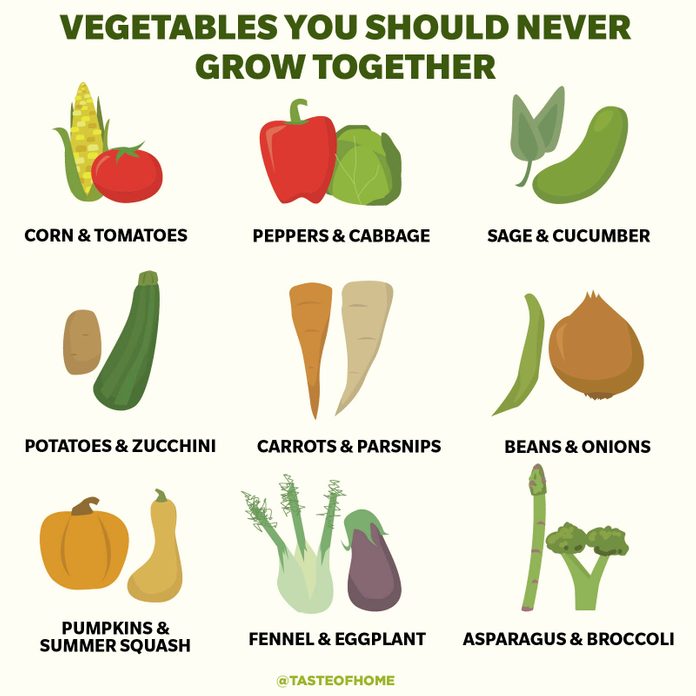Ultimate Guide to Companion Planting with Oregano: Boost Your Garden's Health and Flavor

Companion planting is a time-honored technique that enhances garden health and productivity by strategically pairing plants. In this ultimate guide, we will explore the remarkable benefits of incorporating oregano into your garden. Known for its robust flavor and medicinal properties, oregano not only enriches culinary dishes but also serves as a powerful companion plant. By understanding its interactions with various vegetables and herbs, you can create a thriving ecosystem that supports growth, deters pests, and boosts the overall flavor of your harvest. Join us as we delve into the art and science of companion planting with oregano for an enhanced garden experience.
The Benefits of Companion Planting with Oregano
Companion planting with oregano offers numerous benefits to garden ecosystems, as this aromatic herb is known to attract beneficial insects while repelling harmful pests. When planted alongside other crops, oregano can enhance their growth by improving soil health and providing shade, which helps retain moisture. Its strong scent can confuse pests that target neighboring plants, effectively acting as a natural pest deterrent. Additionally, oregano can help create a biodiverse environment that promotes healthy plant interactions, leading to increased yields and a more resilient garden overall.
Oregano's Pest Repellent Properties
Oregano is particularly effective in repelling common garden pests such as aphids and spider mites. The volatile oils present in oregano's leaves release strong aromas that deter these insects, making it an excellent companion for more vulnerable plants. By co-planting oregano with susceptible crops, gardeners can significantly reduce the need for chemical pesticides, promoting a healthier and more sustainable growing environment.
Enhancing Soil Quality
Oregano contributes to improved soil health by attracting beneficial microorganisms and earthworms, which play a vital role in nutrient cycling. Its deep root system helps aerate the soil, promoting better drainage and enhancing water retention for neighboring plants. Additionally, as oregano decomposes, it adds organic matter back into the soil, enriching it and helping to sustain plant growth in the long run.
Attracting Beneficial Insects
Companion planting with oregano can effectively attract pollinators and predatory insects, such as ladybugs and lacewings, which help control pest populations. These beneficial insects are vital for the overall health of a garden, as they assist in pollination and natural pest management. By including oregano in your garden plan, you provide resources that support a thriving ecosystem, leading to improved crop health and production.
The Best Companion Plants for Oregano
Oregano pairs well with a variety of plants, including tomatoes, bell peppers, and cucumbers. These plants benefit from oregano's pest-repelling qualities, as well as its ability to improve soil conditions. Additionally, it thrives in similar growing conditions, making it an excellent choice for mixed planting in herb and vegetable gardens. However, caution should be taken when planting oregano near plants like mint, which can outcompete it for resources.
How to Incorporate Oregano in Your Garden
To effectively incorporate oregano into your garden, consider planting it in containers or at the edges of garden beds, as it can spread quickly if not contained. Oregano prefers full sun and well-drained soil, making it suitable for a variety of settings, including raised beds and borders. Regular pruning helps maintain its shape and encourages bushy growth, allowing it to thrive alongside other plants in a companion planting arrangement.
| Plant Type | Benefits from Oregano |
|---|---|
| Tomatoes | Reduced pest presence and improved growth |
| Bell Peppers | Enhanced soil quality and pest protection |
| Cucumbers | Increased moisture retention and pest deterrence |
| Carrots | Attraction of beneficial insects |
| Mint | Limited compatibility due to competitive growth |
What should I not plant next to oregano?

Oregano is a popular herb used in culinary dishes, but certain plants can negatively affect its growth. When planning your garden, it is essential to know what not to plant next to oregano to ensure it thrives.
Companion Planting Basics
Companion planting involves growing different plants close together to enhance growth or repel pests. However, some plants can hinder each other's development. When considering what not to plant next to oregano, it's vital to understand that incompatible plants can compete for resources or release substances that are detrimental to the health of your oregano. Here are some categories of plants to keep at a distance from oregano:
- Plants that require high moisture
- Plants that attract pests
- Plants with aggressive root systems
Heavy Feeders
Oregano grows best when it has access to nutrients in the soil without competition from heavy feeders. Plants like tomatoes, corn, and squash can extract a significant amount of nutrients, potentially stunting the growth of oregano. These plants require more resources like nitrogen, which can leave oregano lacking.
See also:
- Tomatoes: They absorb nutrients significantly, which can deplete the soil's natural resources for oregano.
- Corn: Corn grows tall and requires a lot of nitrogen, competing with oregano for these vital nutrients.
- Squash: Squash plants can overshadow oregano and drain the soil of essential nutrients.
High-Water Usage Plants
Oregano prefers well-drained soil and does not thrive in overly moist conditions. Planting it next to species that require a lot of water, like cucumbers and zucchinis, can potentially cause root rot and other moisture-related issues.
- Cucumbers: They need consistent moisture, which can be detrimental to the relatively dry conditions that oregano prefers.
- Zucchini: Similar to cucumbers, zucchini requires high water, competing with oregano’s need for well-drained soil.
- Watermelons: These plants require lots of water, which can create a damp environment unsuitable for oregano's growth.
Pest-attracting Plants
Some plants tend to attract pests that might affect the health of your oregano. For instance, planting oregano near crops like cabbage and kale can attract aphids, which can spread to your oregano.
- Cabbage: Known to attract pests like aphids that could infest your oregano plants.
- Kale: Similar to cabbage, it can bring unwanted insects that affect neighboring plants.
- Broccoli: Another cruciferous plant that attracts a variety of pests that could harm your oregano.
Aggressive Root Systems
Plants with aggressive root systems can overpower the more delicate roots of oregano. Examples include mint and bamboo, which can lead to competition for space and resources in the soil.
- Mint: Known for its invasive nature, mint can spread quickly and overshadow oregano, inhibiting its growth.
- Bamboo: This plant's aggressive roots can choke out oregano's roots, making it difficult for oregano to thrive.
- Fennel: Its roots can release chemicals that are harmful to the growth of oregano nearby.
Herb-Specific Considerations
While some herbs can be great companions, others may not suit oregano. Planting basil or parsley near oregano might seem helpful, but they can sometimes compete too closely in terms of light and nutrients.
- Basil: They require similar growing conditions, leading to potential competition between the two plants.
- Parsley: Like basil, it can compete for nutrients and space, restricting oregano’s development.
- Chives: While they are also herbs, they might compete for soil resources, which can lead to decreased growth in oregano.
What pairs best with oregano?

Oregano is a versatile herb commonly used in various cuisines. It pairs well with a range of ingredients that enhance its earthy and slightly bitter flavor. Here are some of the best pairings for oregano:
Tomatoes
Tomatoes and oregano are a classic pairing in many dishes, especially in Italian cuisine. The sweetness of tomatoes complements the robust flavor of oregano.
- Perfect for sauces: Oregano enhances tomato sauces for pasta and pizza.
- Fresh salads: Fresh tomatoes with oregano add zest to salads.
- Roasted dishes: Roasting tomatoes with oregano brings out both ingredients' natural flavors.
Garlic
The combination of garlic and oregano brings depth to a dish. Garlic's pungency meshes well with the aromatic notes of oregano, making it a harmonious pairing.
- Flavor base: Use both ingredients as a base for marinades and dressings.
- Sautéing: Adding garlic and oregano while sautéing vegetables deepens the flavor.
- Meat dishes: This combo is perfect for seasoning meats like chicken and lamb.
Olive Oil
Olive oil serves as an excellent medium for oregano, allowing its flavor to spread throughout dishes. The richness of olive oil complements oregano's herbal notes.
- Dipping oil: Combine olive oil with oregano for a tasty bread dip.
- Salad dressings: Infuse olive oil with oregano for a zesty salad dressing.
- Roasted vegetables: Drizzling olive oil and oregano over veggies before roasting enhances their taste.
Cheese
Certain types of cheese, particularly those used in Mediterranean dishes, pair splendidly with oregano. The creaminess of cheese balances the herb's strong flavor.
- Pizza toppings: Sprinkle oregano over mozzarella cheese for traditional pizza.
- Stuffed dishes: Mix oregano with ricotta for stuffed pasta and ravioli.
- Cheese boards: Add oregano-flavored cheeses to cheese boards for variety.
Lemon
The brightness of lemon contrasts nicely with oregano’s earthiness. This pairing is often used in Mediterranean cooking to brighten dishes.

- Marinades: Lemon juice and oregano work well in marinades for fish and poultry.
- Salads: Lemon dressing with oregano elevates simple green salads.
- Hummus: Adding lemon and oregano to hummus gives it a fresh twist.
What herbs should never be planted together?

Certain herbs can be detrimental to each other's growth when planted in close proximity. Understanding which herbs should never be planted together is crucial for maintaining a healthy herb garden. Below are some examples and explanations of incompatible herbs.
1. Basil and Rue
Basil and rue are both aromatic herbs but are known to be incompatible. Planting them together can inhibit each other's growth. The compounds released by rue can negatively affect basil's ability to flourish. Additionally, this combination can lead to poor flavor development in the basil.
- Competing flavors can ruin the intended culinary use of basil.
- Rue is known to exude a toxic effect on basil seedlings.
- This combination may lead to diminished yields in both herbs.
2. Mint and Cabbage Family
Mint, particularly spearmint and peppermint, can spread aggressively in a garden. When planted near crops from the cabbage family (like cabbage, kale, and broccoli), mint can lead to significant competition for resources. This competition may stunt the growth of the cabbage relatives.
- Mint's rapid growth can overshadow the slower-growing cabbage.
- Cabbage plants may suffer from nutrient depletion due to mint's invasive nature.
- Both herbs may be at risk for pest problems when grown together.
3. Fennel and Most Herbs
Fennel is infamous for its compatibility issues with a broad range of herbs. It can suppress the growth of others through its allelopathic properties—this means it releases substances that inhibit the growth of surrounding plants.
- Fennel can have a negative effect on basil, cilantro, and dill.
- Herbs in close proximity to fennel may experience stunted growth.
- Fennel’s presence can attract pests that also affect other herbs negatively.
4. Coriander and Other Aromatic Herbs
Coriander (or cilantro) has a specific growth pattern that doesn't harmonize well with other aromatic herbs. When grown in proximity to basil or dill, it can lead to conflicting growth habits.
- Coriander may take over essential nutrients needed by basil or dill.
- The flavor and aroma profile can be adversely affected when combined.
- Incompatible growth can lead to a poor harvest overall.
5. Sage and Rosemary
While sage and rosemary are both popular culinary herbs, they often compete for the same resources, which can lead to suboptimal growth. Their similar requirements make them poor companions in a garden.
- Both herbs may struggle due to competition for water and nutrients.
- This combination may result in diminished flavor development.
- Their pest resistance may also be compromised when planted together.
Questions from Our Readers
What is companion planting with oregano?
Companion planting with oregano involves planting this herb alongside various plants to enhance growth, deter pests, and improve flavors. Oregano releases certain compounds that can help protect neighboring plants, making it a beneficial addition to vegetable gardens and flower beds.
Which plants are best paired with oregano?
Oregano thrives when planted with tomatoes, peppers, and cabbage. The strong aroma of oregano can help deter pests that typically affect these plants, while also potentially enhancing their flavor through the synergy created in the garden.
Can oregano help repel pests in the garden?
Yes, oregano is known for its ability to repel pests due to its strong scent and essential oils. These characteristics make it an effective natural deterrent for insects such as aphids and whiteflies, contributing to a healthier garden ecosystem.
How does oregano improve the growth of neighboring plants?
Oregano promotes the growth of neighboring plants by creating a microclimate in the garden and attracting beneficial insects. The nutrient exchange facilitated by companion plants can enhance soil quality, while oregano’s essence can stimulate growth and yield in herbs and vegetables nearby.
See also:

If you want to read more articles like Ultimate Guide to Companion Planting with Oregano: Boost Your Garden's Health and Flavor, we recommend you check out our Gardeners category.
Leave a Reply
Related Articles